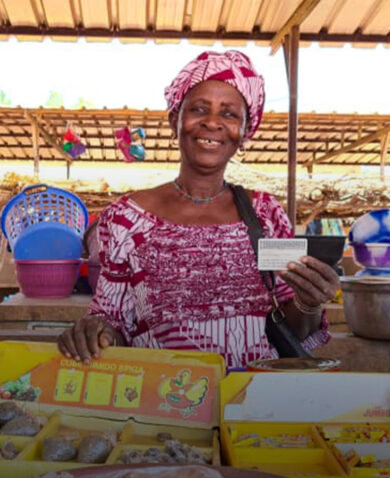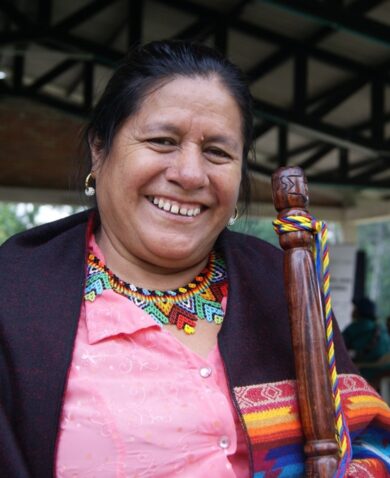
Using Civic Justice to Disrupt Cycles of Violence: Lessons Learned from Mexico
October 3, 2019 | 5 Minute ReadBy addressing root causes, civic justice can prevent violence before it escalates. In Mexico, several municipalities are turning to this model to promote lawfulness, build trust, and counter violence.
Last month in Morelia, Michoacán in Mexico, a woman returned to her vehicle to find she was being ticketed by a police officer for parking in a no parking zone. She became verbally aggressive towards the officer, pushed him, and accused him of distributing tickets only to collect bribes.
Three years ago, Morelia authorities would have likely addressed this incident through an immediate punitive measure — perhaps a night in jail or the solicitation of a bribe to avoid jail time. Instead, last month, this woman was sent to a public hearing, much like a community court. The judge explained the impact of these actions on the community at large: parking in prohibited spaces infringes on the rights of other people, and pushing a police officer without any consequence disrespects the person and the institution and lowers the morale of the police force. After assessing her individual situation and needs, the judge then directed her to free cognitive behavioral therapy as an alternative to paying a fine.
This scenario outlines the basic logic behind the Civic Justice Model, pioneered in Mexico by municipal governments in Morelia and Escobedo, with the support of the Federal Government of Mexico and the USAID Juntos para la Prevención de la Violencia (JPV) Activity. While criminal justice addresses violence that has already escalated, “civic justice” deals with minor offenses and aims to prevent violence before it escalates. By addressing the causes of community conflicts and minor offenses (such as neighbor quarrels, public intoxication, driving under the influence, and graffitiing), the model, supported by a local systems framework, is a promising institutional solution for violence prevention. It disrupts cycles of violence by identifying when an individual has a propensity towards violence (in this case, a hostile reaction to a parking ticket) and providing alternative solutions to punitive measures, like therapy, which helps reduce impulsiveness and improve decision-making. This could prevent potentially more severe acts of violence, such as fighting, domestic violence, or homicide.
In Mexico, these types of minor offenses and community conflicts deteriorate daily peace and citizen coexistence, forcing residents to accept violence as part of their lives. It is commonly assumed that drug trafficking and organized crime are the main determinants of violence in Mexico; however, data tells us that many crimes in Mexico are the result of impunity, insufficient law enforcement, and rule of law deficiency. Of the 33 million crimes committed in 2018, for example, 28.5 percent relate to street or public transport robbery or assault, 17 percent to extortion, 14 percent to fraud, and 11.5 percent to vehicle theft. In this context, the Civic Justice Model is an important mechanism in Morelia and Escobedo — and now in other Mexican municipalities — to promote a culture of lawfulness, build trust between citizens and their local governments, and disrupt cycles of violence. To implement this model in other contexts, we offer the following lessons.
Transitioning to Civic Justice: Lessons Learned
Institutional buy-in is critical to change mindsets. Changing from punitive to preventive structures is hard work and entails a widespread shift in mindset among relevant actors. In Mexico, we found that having a champion within local government was a game changer — in particular, someone who can influence others both within and outside of government. This should be someone, such as the mayor or public safety commissioner, who can bring multisectoral actors to the table to work towards a vision for service provision that would support civic justice implementation. To develop champions and advocate for civic justice as a crime and violence prevention mechanism, JPV worked with local stakeholders to incentivize action by framing it in the context of larger national violence prevention priorities and as an opportunity to demonstrate regional leadership.
Multisectoral participation strengthens long-term sustainability. Multisectoral participation ensures sustainability both through consistent buy-in, despite changes in local government administration, as well as more holistic crime and violence prevention strategies. Academic and civil society actors are essential for service provision and are generally incentivized by similar objectives and missions. Public sector entities also make powerful allies. For example, after the local 2018 elections in Morelia, the private sector played a major role in ensuring consistent support for the Civic Justice Model despite changing administrations and priorities. In our experience, these entities (e.g., local business associations) understand that prevention mechanisms are worth the investment given that crime and violence are costly, and frankly, bad for business. A recent study published by JPV estimates that crime had an impact of 1.52 trillion pesos (approximately 76.7 billion dollars) to the Mexican economy in 2018, which represents 6.8 percent of Mexico’s gross domestic product. It estimates that reducing crime by 50 percent by 2030 would save the economy at least 15 trillion pesos, approximately 757.4 billion dollars — representing savings for local businesses and individuals throughout the country.
Implementing civic justice does not need to break the bank. Of course, buy-in is tied to money. Existing criminal justice measures may seem more profitable for the state and for those within the punitive system that benefit from corruption (e.g., bribes). However, a wealth of scholarly research, books, and academic journals proves that effective crime prevention measures and alternative solutions such as cognitive behavioral therapy save significant costs for local governments. Implementing the Civic Justice Model does imply some spending, but as an effective solution to prevent crime, it saves more costs in the long run. According to JPV technical experts, it may be necessary to initially hire additional practitioners, such as social workers and psychologists, to help judges assess if probable offenders require treatment, e.g., addiction or anger management. Infrastructure is the main cost variable. While Morelia invested in new courts, the municipalities of Escobedo and Tonalá used existing spaces, so infrastructure was less costly.
Effective civic justice isn’t possible without integrated social services. Judges are pivotal to the Civic Justice Model, but they aren’t social workers or psychologists. In other words, integrated services are necessary for a holistic approach to crime and violence prevention. We have encountered two barriers in strengthening service provision for effective civic justice. The first is ensuring that individuals are directed to the right services, relevant to their individual circumstances and needs. For this, we have implemented individualized assessment tools for use when necessary, such as evaluating risk factors in individuals (e.g., history of previous violence or substance abuse) that help social workers provide accurate information for judges to inform decision-making. The second barrier is ensuring that systemic capacity exists to attend to those needs and the high demand that comes from civil courts. Alliances are key. In the best-case scenario, diverse actors work together and invest in a collective vision, as in the example of Morelia – where, beyond the participation of law enforcement, a private-public organization provides addiction treatment; a private university provides cognitive behavioral therapy services and training to police and judges; and a local soccer team provides alternatives to violence for at-risk youth.
To support local efforts to counter violence and curb crime, development implementers should 1) prioritize institutional buy-in, 2) ensure multisectoral participation, 3) advocate for prevention as a long-term solution that represents major cost savings, and 4) integrate social services for a holistic approach. JPV will continue to offer up lessons to the development community to build and sustain peace and stability.
On Friday, October 4 in Washington, D.C., members of the Mexico JPV project team will present on the Civic Justice Model at PeaceCon 2019, hosted by the Alliance for Peacebuilding. Presenters will include Technical Director José Lobo (co-writer of this post), Policy Delivery Specialist Marco Valencia, Morelia City Coordinator Eduardo Macouzet, and Evaluation Specialist Alejandra Martínez. The Civic Justice Model has also been honored as an accepted peace and security project under the Paris Peace Forum’s 2019 selected projects. See more information on Mexico JPV’s broader local systems framework in this post by former JPV chief of party, Enrique Rivas.
Posts on the blog represent the views of the authors and do not necessarily represent the views of Chemonics.























































